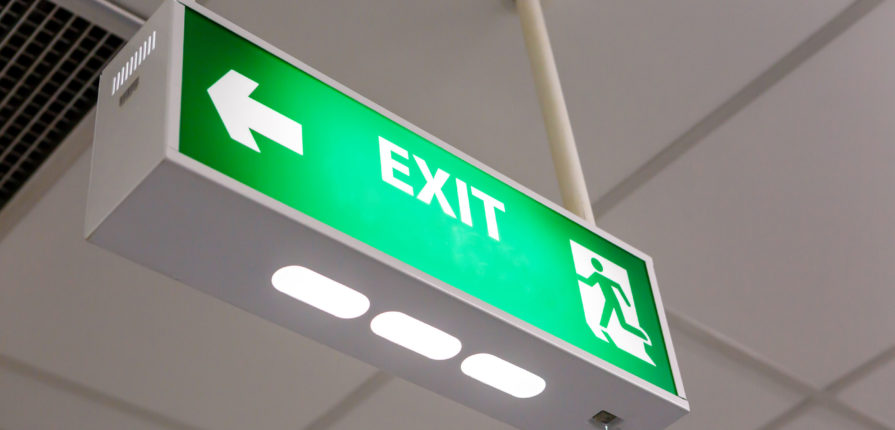In one of our recent articles, we talked about how easy it is to forget about your fire extinguishers as they are usually tucked away somewhere out of sight, out of mind. The same can be said about your emergency and exit lights, but here the difference is that they are in plain sight.
Let’s take a quick look at how these devices work, what type of testing is required, and what you need to know when it comes to fire code compliance.
Emergency Lights and Exit Signs
Commercial emergency lighting and exit signs are of course powered by the main electrical service. Fire Code requires a certain number of light fixtures and all Emergency Exit Signs to be outfitted with emergency battery backup, which activates in the event that electrical power to those fixtures is lost for any reason. Battery backups must be rated to maintain sufficient emergency power for at least 90 minutes.
Because Emergency Exit Signs must remain perpetually illuminated 24/7 without a single day’s exception, most units have two sets of bulbs. The main set of bulbs operates on 110 volts, and the emergency battery backup bulbs are low voltage, which activate in the event of a power loss. Therefore, it is important to periodically check that the backup system, including the battery and bulbs, is in working order, as there is no way of knowing under normal operating conditions. In many larger facilities and offices, power to emergency lights and exit signs is provided by an emergency generator or a UPS system. Testing of emergency lighting in these facilities is normally done at the same time that the generator or UPS system is tested.

Types of testing required
Testing and maintenance of your workplace’s emergency and exit lights is an important aspect of ensuring the safety and well-being of your employees, your business, and liability risk mitigation. State-mandated fire codes require that all emergency lights and exit signs be inspected and tested at least once a month, supplemented with a comprehensive annual inspection. These tests must include a thirty-second test of the lights where the lights are operated on emergency power for the full minimum of 90 minutes. In addition, all tests are required to be supported with written documentation and made available for review by the state fire marshal or your insurance company.
Many emergency lights or exit signs have a “push to test” button on the casing. This button can be pressed and held for thirty seconds to test the bulbs and battery. The lights must turn on and remain at the same brightness level for the full thirty seconds. If the lights dim during that duration, or the bulbs are not functioning, you should contact your facility maintenance staff or contractor to replace the bulbs and/or batteries housed in the fixture. Exit signs should be checked to see they are properly lit in normal power mode. For a large number of devices, or the annual 90-minute test, a more efficient way of testing is to locate the circuit breaker that supplies power to the emergency lights or exit signs, turn it off, and see if the lights work for the 90 minute testing period.
If your facility maintenance staff requires assistance with the inspection and testing of your devices, we can help you.
Email: service@callsierra.com
Phone: 1-(888)-880-4949
Fax: 818-474-7795







